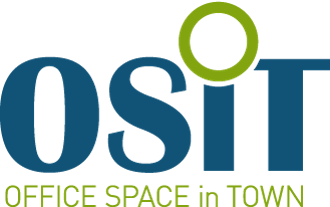Case Study: Returning to the office safely
Are you wondering how to get back to the office safely?
In OSiT’s recent survey into the impacts of lockdown remote working for people’s health and wellbeing, the negative effects were clear. 29% of people reported feelings of loneliness being one of the main disadvantages of working from home, while 37% reported being able to ‘unplug’ from work and 25% of people experienced an increase in feelings of anxiety.
At OSiT, ensuring people can safely return to an office environment that powers productivity and supports their wellbeing is our first priority, which is why we’re so proud of the amazing work of our HR agency to achieve just that for one homeware design business…
In March this year, many businesses found themselves in a position where they had no option but to ask their employees to work from home. Over a period of weeks and months, employees settled into a “new normal” and some of the initial practical issues were addressed to enable effective working for many. Whilst many employees have grown to enjoy the additional flexibility this brings, for some businesses this has had a detrimental effect on Company performance, and the potential to impact the success of the business moving forward.
In some particular businesses, it was felt the future success of the company was dependent upon the team being able to safely return to working from their office. To achieve this, a significant amount of reassurance was required, and HR Dept have worked very closely with their clients over recent weeks to enable the effective return of their employees to the office, just as we have done for our clients at OSiT.
In one particular case, their initial approach was to send all staff a letter indicating the intention to re-open the office and giving them six weeks’ notice of this plan. The staff were also sent a confidential questionnaire asking for their direct feedback on a number of points, including:
How they felt about returning to the office
What concerns (if any) they had
Any additional materials, training or equipment they felt would be beneficial to ensure they felt safe to return
Any obstacles required to be resolved before returning
Anything HR or their manager could help with
Once everyone had returned their questionnaire and the information was collated, it became clear that many of the concerns raised could be effectively addressed via the formal and robust risk assessment that had already been completed for their offices.
Among the concerns raised, office cleaning was high on the list, but could be quickly addressed through the implementation of additional cleaning measures, including the introduction of a midday clean, and the widescale availability of sanitiser and desk/screen cleaning materials. Adequate ventilation, screens and office layout were also cited and reassurance given.
The issue of transport arrangements was critical, and the company were quick to reassure all staff they could implement totally flexible start and finish times to enable all employees to choose the most appropriate travel times to suit their own particular circumstances. The bike to work scheme was also explored in more detail to establish the level of interest.
Once all the issues had been addressed, all staff were sent a copy of the risk assessments along with a detailed explanation of the Company’s approach to all the issues and concerns that had been raised. All staff were then invited to individual (videoconference) meetings with HR and their manager to discuss their attitude to a return to the office once all these factors had been considered and addressed.
This has then been followed up with a second round of feedback, once people had returned to the office, in order to gather honest feedback on how team members felt about the experience.
Among the overwhelming positives people cited after a few weeks back at their workplace were:
Improved mental health /well being
Feeling part of a team again (in many cases employees were communicating with some of the team, but had no interaction with others)
Improved productivity (fewer distractions and ability to ask questions and discuss issues across the office without having to call or wait for an email response)
Looking forward to seeing children/family at the end of the day
Home feeling like a place to chill again, rather than an extension of the workplace
There is no doubt that for many people, after a few nervous days in some cases, the return to ‘normal working’ has been very well received, has helped relieve massive ‘online/telephone fatigue’ and assisted people in re-building their social lives. However, the need to keep the arrangements under regular review and be able to react to any concerns as they arise remains a high priority, so that the company can maintain the trust and confidence of all employees.
If you’re looking for assistance, help or a consultation on getting your team safely back to the office, contact Jan Hulatt at HR Dept: jan.hulatt@hrdept.co.uk
